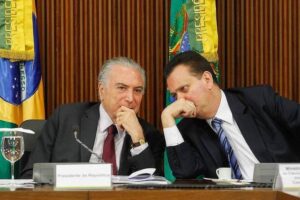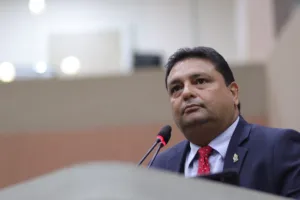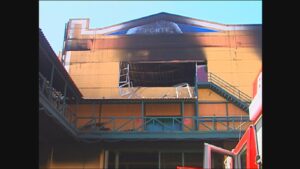The sun rises over St. Peter’s Square, but the Sistine Chapel’s chimney remains silent after yesterday’s black smoke. On May 8, 2025, the Vatican awakens enveloped in anticipation, with 133 cardinal electors gathered on the second day of the conclave to choose Pope Francis’s successor, who passed away on April 21. The absence of white smoke in the first vote, held on the afternoon of May 7, signals that no candidate secured the 89 votes needed, equivalent to two-thirds of the electoral college. Thousands of faithful and tourists crowd the square, watching the chimney, while the world follows the process that will determine the 267th pontiff of the Catholic Church.
The conclave, launched after the Pro Eligendo Pontifice Mass, a solemn celebration in St. Peter’s Basilica, adheres to strict traditions. The black smoke, seen around 4 p.m. (Brasília time) on Wednesday, indicates the initial vote was inconclusive, an expected outcome, as no modern conclave has elected a pope on the first day. On Thursday, up to four voting rounds are scheduled, with smoke expected around 7 a.m. and 2 p.m. (Brasília time), unless an early election occurs. The college’s diversity, with representatives from 71 countries, reflects the Church’s globalization but also hints at potential divisions.
The wait for the new pope mobilizes not only the faithful but also global media, with live broadcasts in dozens of languages. The Sistine Chapel, sealed and protected against external interference, is the epicenter of a ritual blending spirituality and secrecy. The process, governed by the apostolic constitution Universi Dominici Gregis, requires cardinals to maintain absolute secrecy about discussions, under penalty of excommunication.
Key aspects define the current conclave moment:
- Absolute secrecy: Cardinals are isolated, with no access to phones or external communication.
- Intense voting: Up to four daily rounds from the second day increase pressure for consensus.
- Smoke as a signal: Burning ballots, mixed with chemicals, produces black or white smoke, visible to all in St. Peter’s Square.
Expectation in St. Peter’s Square
The morning of May 8 began with Mass and lauds in the Pauline Chapel, followed by the cardinals’ entry into the Sistine Chapel at 9:15 a.m. (local time). The crowd in St. Peter’s Square, composed of faithful, tourists, and journalists, keeps eyes fixed on the chimney, awaiting the signal that could come at any moment. On Wednesday, about 45,000 people witnessed the first result, and today’s turnout is even larger, with papal souvenir vendors and prayer groups present.
Yesterday’s black smoke, which took longer than expected to appear, sparked speculation. While the Vatican anticipated its release at 2:10 p.m., it only emerged at 4 p.m., possibly due to a prolonged sermon by Cardinal Raniero Cantalamessa or the inexperience of many cardinals attending their first conclave. The delay fueled debates among the faithful but did not disrupt the serene atmosphere, filled with chants and rosaries.
Traditions and rituals of the conclave
The conclave is one of the world’s oldest electoral processes, with roots dating back to the 13th century. In the Sistine Chapel, under Michelangelo’s frescoes, cardinals write their votes on ballots inscribed with “Eligio in Summum Pontificem” (I elect as Supreme Pontiff). To ensure secrecy, they are instructed to disguise their handwriting, and ballots are burned after each count, producing the smoke that communicates the outcome to the world.
Each voting session begins with prayers and oaths. On Wednesday, after the “Extra Omnes” (All out), pronounced by the master of ceremonies, the chapel’s doors were closed, isolating the cardinals. The oath of secrecy, taken individually, underscores the moment’s gravity. The initial vote, seen as symbolic by many, serves to map preferences but rarely determines the elected.
The process may extend for days, though the last conclaves, in 2005 and 2013, lasted only two days. If no consensus is reached by the third day, a 24-hour pause is held for prayers and reflection. After 34 inconclusive votes, the system shifts, limiting the choice to the two most-voted candidates, still requiring two-thirds of the votes.
Profile of the cardinal college
With 133 electors, the 2025 conclave is the most global in history, with representatives from over 70 countries. Europe, which historically dominated the college, now accounts for less than half of the voters, reflecting Pope Francis’s appointments aimed at diversifying the Church. Brazil has seven cardinal electors, including Leonardo Ulrich Steiner, archbishop of Manaus, and Paulo Cezar Costa, archbishop of Brasília.
Among the cardinals, some are considered “papabili,” such as Italy’s Pietro Parolin, Vatican Secretary of State, and the Philippines’ Luis Antonio Tagle, known for his closeness to the grassroots. However, experts note that the election is unpredictable, and lesser-known candidates often surprise. Francis’s influence, having appointed 80% of the electors, is a factor, but it does not guarantee a progressive choice.
Logistics and security in the Vatican
The conclave’s organization involves complex logistics. The Sistine Chapel was inspected to prevent cameras or microphones, and signal jammers were installed to block external communications. Cardinals are housed in the Domus Sanctae Marthae, where they eat and rest but remain cut off from the outside world. The Swiss Guard and Vatican teams ensure security, while global media tracks every move.
Preparations included installing the chimney in the Sistine Chapel days before the conclave. Chemicals used to produce the smoke—potassium perchlorate, anthracene, and sulfur for black; potassium perchlorate, lactose, and chloroform resin for white—are carefully handled. When white smoke appears, St. Peter’s Basilica bells will ring, confirming the election.
Key logistical details include:
- Total isolation: Cell signals are blocked, and cardinals have no access to newspapers or TVs.
- Sistine Chapel: The site is swept for electronic devices before each vote.
- Domus Sanctae Marthae: The residence offers 130 rooms, ensuring comfort for electors.
- Live broadcasts: Vatican News covers events in 11 languages, including Portuguese.
Names in contention and speculation
Though conclave secrecy prevents confirmations, speculation about candidates dominates outside the Sistine Chapel. Pietro Parolin, 70, is seen as a skilled diplomat with international negotiation experience. Luis Antonio Tagle, 67, stands out for his charisma and advocacy for the poor, aligned with Francis’s legacy. Other names, like Hungary’s Peter Erdo and Portugal’s José Tolentino de Mendonça, also appear in betting pools.
The college’s diversity fuels debates about a non-European pope. For the first time, Asia and Africa have significant representation, with cardinals like India’s Oswald Gracias and South Africa’s Wilfrid Napier. However, the need for consensus makes the choice complex, and alliances among groups may shape the outcome.
Reactions from the faithful and media
In St. Peter’s Square, the atmosphere is one of expectation and spirituality. Nuns, families, and pilgrims from around the world pray the rosary and follow news on giant screens. Yesterday’s black smoke did not dampen spirits, as many see the process as a moment of renewal for the Church. Many carry their countries’ flags, symbolizing Catholicism’s universality.
International media maintains teams in the Vatican, with reporters stationed in St. Peter’s Square and the Braccio Carlo Magno, a strategic spot for broadcasts. Channels like CNN, BBC, and Al Jazeera offer continuous coverage, while Vatican News broadcasts in 56 languages, including sign language. The mobilization reflects global interest in the conclave, attracting not only Catholics but also political and cultural observers.
Historical moments of the conclave
The 2025 conclave joins a tradition that has produced remarkable episodes. In 1271, the election of Gregory X lasted over two years, leading to stricter rules. In contrast, modern conclaves are swift, averaging 3.2 days in the last ten processes. John Paul II’s 1978 election marked the first non-Italian pope in centuries, while Francis’s 2013 election brought the first Latin American pontiff.
Each conclave reflects the Church’s context in its era. In 2025, issues like synodality, climate change, and abuse prevention, championed by Francis, are in pre-conclave discussions. The new pope’s choice will be shaped by these priorities, as well as internal matters, like decentralizing the Roman Curia.
Notable historical milestones include:
- 1271: Longest conclave, lasting nearly three years.
- 1978: Election of John Paul II, first Polish pope.
- 2013: Choice of Francis, first Jesuit and Latin American.
- 2025: Greatest diversity, with 71 countries represented.
Role of smoke in the ritual
The smoke is the conclave’s most visible element, connecting the isolated cardinals to the outside world. Produced by burning ballots in a special stove, it is the only public sign of voting progress. Black smoke, signaling an inconclusive vote, is awaited with anticipation, but white smoke, accompanied by bells, triggers celebrations. In 2013, the white smoke announcing Francis was seen by millions worldwide.
Smoke timings are carefully planned. On Thursday, they may appear at 5:30 a.m., 7 a.m., 12:30 p.m., or 2 p.m. (Brasília time), depending on voting pace. If an election occurs, white smoke emerges before regular times, surprising the faithful. The process’s precision reflects the Vatican’s commitment to keeping tradition alive in a digital world.
Preparations for the announcement
When the new pope is elected, Cardinal Protodeacon Dominique Mamberti will appear on St. Peter’s Basilica’s balcony to proclaim “Habemus Papam.” The elected, after accepting in the Room of Tears, chooses his papal name and dons white vestments. About 30 to 60 minutes after white smoke, he delivers the Urbi et Orbi blessing, marking his pontificate’s start.
The Room of Tears, located under Michelangelo’s “Last Judgment,” is a space for the new pope’s reflection. There, he answers, “Do you accept your canonical election as Supreme Pontiff?” and “By what name do you wish to be called?” The moment, laden with symbolism, precedes the pontiff’s presentation to the crowd, which typically fills St. Peter’s Square.
Influence of Francis’s legacy
Pope Francis, the first Jesuit and Latin American, left a legacy of reform and openness. His emphasis on synodality, environmental protection, and abuse prevention shaped the cardinal college. The cardinals, many appointed by him, face the challenge of balancing continuity and renewal. Issues like global peace and social justice, championed by Francis, resonate in pre-conclave discussions.
The college’s diversity reflects Francis’s vision of a more inclusive Church. The presence of cardinals from countries like Mongolia, Haiti, and South Sudan signals Catholicism’s expansion to new regions. However, divisions between progressives and traditionalists may influence voting, potentially lengthening the process.
Key aspects of Francis’s legacy include:
- Synodality: Promoting a participatory Church with greater lay involvement.
- Environment: The Laudato Si’ encyclical placed ecology at the heart of Catholic discourse.
- Abuse prevention: Reforms to increase transparency in the Church.
- Diplomacy: Mediation in global conflicts, like between Cuba and the U.S.
Global attention to the conclave
The 2025 conclave draws attention far beyond the Vatican. World leaders, from presidents to monarchs, follow the process, aware of the pope’s geopolitical weight. Francis’s 2013 election was a milestone for Latin America, and now speculation surrounds the possibility of an Asian or African pope. The choice will influence the Church’s stance on issues like migration, inequality, and climate change.
Online, the event dominates social media, with hashtags like #Conclave2025 and #HabemusPapam gaining traction. Posts on X reflect global anticipation, with users sharing photos of St. Peter’s Square and speculating about candidates. Media coverage, amplified by real-time broadcasts, keeps the world connected to the Vatican.

The sun rises over St. Peter’s Square, but the Sistine Chapel’s chimney remains silent after yesterday’s black smoke. On May 8, 2025, the Vatican awakens enveloped in anticipation, with 133 cardinal electors gathered on the second day of the conclave to choose Pope Francis’s successor, who passed away on April 21. The absence of white smoke in the first vote, held on the afternoon of May 7, signals that no candidate secured the 89 votes needed, equivalent to two-thirds of the electoral college. Thousands of faithful and tourists crowd the square, watching the chimney, while the world follows the process that will determine the 267th pontiff of the Catholic Church.
The conclave, launched after the Pro Eligendo Pontifice Mass, a solemn celebration in St. Peter’s Basilica, adheres to strict traditions. The black smoke, seen around 4 p.m. (Brasília time) on Wednesday, indicates the initial vote was inconclusive, an expected outcome, as no modern conclave has elected a pope on the first day. On Thursday, up to four voting rounds are scheduled, with smoke expected around 7 a.m. and 2 p.m. (Brasília time), unless an early election occurs. The college’s diversity, with representatives from 71 countries, reflects the Church’s globalization but also hints at potential divisions.
The wait for the new pope mobilizes not only the faithful but also global media, with live broadcasts in dozens of languages. The Sistine Chapel, sealed and protected against external interference, is the epicenter of a ritual blending spirituality and secrecy. The process, governed by the apostolic constitution Universi Dominici Gregis, requires cardinals to maintain absolute secrecy about discussions, under penalty of excommunication.
Key aspects define the current conclave moment:
- Absolute secrecy: Cardinals are isolated, with no access to phones or external communication.
- Intense voting: Up to four daily rounds from the second day increase pressure for consensus.
- Smoke as a signal: Burning ballots, mixed with chemicals, produces black or white smoke, visible to all in St. Peter’s Square.
Expectation in St. Peter’s Square
The morning of May 8 began with Mass and lauds in the Pauline Chapel, followed by the cardinals’ entry into the Sistine Chapel at 9:15 a.m. (local time). The crowd in St. Peter’s Square, composed of faithful, tourists, and journalists, keeps eyes fixed on the chimney, awaiting the signal that could come at any moment. On Wednesday, about 45,000 people witnessed the first result, and today’s turnout is even larger, with papal souvenir vendors and prayer groups present.
Yesterday’s black smoke, which took longer than expected to appear, sparked speculation. While the Vatican anticipated its release at 2:10 p.m., it only emerged at 4 p.m., possibly due to a prolonged sermon by Cardinal Raniero Cantalamessa or the inexperience of many cardinals attending their first conclave. The delay fueled debates among the faithful but did not disrupt the serene atmosphere, filled with chants and rosaries.
Traditions and rituals of the conclave
The conclave is one of the world’s oldest electoral processes, with roots dating back to the 13th century. In the Sistine Chapel, under Michelangelo’s frescoes, cardinals write their votes on ballots inscribed with “Eligio in Summum Pontificem” (I elect as Supreme Pontiff). To ensure secrecy, they are instructed to disguise their handwriting, and ballots are burned after each count, producing the smoke that communicates the outcome to the world.
Each voting session begins with prayers and oaths. On Wednesday, after the “Extra Omnes” (All out), pronounced by the master of ceremonies, the chapel’s doors were closed, isolating the cardinals. The oath of secrecy, taken individually, underscores the moment’s gravity. The initial vote, seen as symbolic by many, serves to map preferences but rarely determines the elected.
The process may extend for days, though the last conclaves, in 2005 and 2013, lasted only two days. If no consensus is reached by the third day, a 24-hour pause is held for prayers and reflection. After 34 inconclusive votes, the system shifts, limiting the choice to the two most-voted candidates, still requiring two-thirds of the votes.
Profile of the cardinal college
With 133 electors, the 2025 conclave is the most global in history, with representatives from over 70 countries. Europe, which historically dominated the college, now accounts for less than half of the voters, reflecting Pope Francis’s appointments aimed at diversifying the Church. Brazil has seven cardinal electors, including Leonardo Ulrich Steiner, archbishop of Manaus, and Paulo Cezar Costa, archbishop of Brasília.
Among the cardinals, some are considered “papabili,” such as Italy’s Pietro Parolin, Vatican Secretary of State, and the Philippines’ Luis Antonio Tagle, known for his closeness to the grassroots. However, experts note that the election is unpredictable, and lesser-known candidates often surprise. Francis’s influence, having appointed 80% of the electors, is a factor, but it does not guarantee a progressive choice.
Logistics and security in the Vatican
The conclave’s organization involves complex logistics. The Sistine Chapel was inspected to prevent cameras or microphones, and signal jammers were installed to block external communications. Cardinals are housed in the Domus Sanctae Marthae, where they eat and rest but remain cut off from the outside world. The Swiss Guard and Vatican teams ensure security, while global media tracks every move.
Preparations included installing the chimney in the Sistine Chapel days before the conclave. Chemicals used to produce the smoke—potassium perchlorate, anthracene, and sulfur for black; potassium perchlorate, lactose, and chloroform resin for white—are carefully handled. When white smoke appears, St. Peter’s Basilica bells will ring, confirming the election.
Key logistical details include:
- Total isolation: Cell signals are blocked, and cardinals have no access to newspapers or TVs.
- Sistine Chapel: The site is swept for electronic devices before each vote.
- Domus Sanctae Marthae: The residence offers 130 rooms, ensuring comfort for electors.
- Live broadcasts: Vatican News covers events in 11 languages, including Portuguese.
Names in contention and speculation
Though conclave secrecy prevents confirmations, speculation about candidates dominates outside the Sistine Chapel. Pietro Parolin, 70, is seen as a skilled diplomat with international negotiation experience. Luis Antonio Tagle, 67, stands out for his charisma and advocacy for the poor, aligned with Francis’s legacy. Other names, like Hungary’s Peter Erdo and Portugal’s José Tolentino de Mendonça, also appear in betting pools.
The college’s diversity fuels debates about a non-European pope. For the first time, Asia and Africa have significant representation, with cardinals like India’s Oswald Gracias and South Africa’s Wilfrid Napier. However, the need for consensus makes the choice complex, and alliances among groups may shape the outcome.
Reactions from the faithful and media
In St. Peter’s Square, the atmosphere is one of expectation and spirituality. Nuns, families, and pilgrims from around the world pray the rosary and follow news on giant screens. Yesterday’s black smoke did not dampen spirits, as many see the process as a moment of renewal for the Church. Many carry their countries’ flags, symbolizing Catholicism’s universality.
International media maintains teams in the Vatican, with reporters stationed in St. Peter’s Square and the Braccio Carlo Magno, a strategic spot for broadcasts. Channels like CNN, BBC, and Al Jazeera offer continuous coverage, while Vatican News broadcasts in 56 languages, including sign language. The mobilization reflects global interest in the conclave, attracting not only Catholics but also political and cultural observers.
Historical moments of the conclave
The 2025 conclave joins a tradition that has produced remarkable episodes. In 1271, the election of Gregory X lasted over two years, leading to stricter rules. In contrast, modern conclaves are swift, averaging 3.2 days in the last ten processes. John Paul II’s 1978 election marked the first non-Italian pope in centuries, while Francis’s 2013 election brought the first Latin American pontiff.
Each conclave reflects the Church’s context in its era. In 2025, issues like synodality, climate change, and abuse prevention, championed by Francis, are in pre-conclave discussions. The new pope’s choice will be shaped by these priorities, as well as internal matters, like decentralizing the Roman Curia.
Notable historical milestones include:
- 1271: Longest conclave, lasting nearly three years.
- 1978: Election of John Paul II, first Polish pope.
- 2013: Choice of Francis, first Jesuit and Latin American.
- 2025: Greatest diversity, with 71 countries represented.
Role of smoke in the ritual
The smoke is the conclave’s most visible element, connecting the isolated cardinals to the outside world. Produced by burning ballots in a special stove, it is the only public sign of voting progress. Black smoke, signaling an inconclusive vote, is awaited with anticipation, but white smoke, accompanied by bells, triggers celebrations. In 2013, the white smoke announcing Francis was seen by millions worldwide.
Smoke timings are carefully planned. On Thursday, they may appear at 5:30 a.m., 7 a.m., 12:30 p.m., or 2 p.m. (Brasília time), depending on voting pace. If an election occurs, white smoke emerges before regular times, surprising the faithful. The process’s precision reflects the Vatican’s commitment to keeping tradition alive in a digital world.
Preparations for the announcement
When the new pope is elected, Cardinal Protodeacon Dominique Mamberti will appear on St. Peter’s Basilica’s balcony to proclaim “Habemus Papam.” The elected, after accepting in the Room of Tears, chooses his papal name and dons white vestments. About 30 to 60 minutes after white smoke, he delivers the Urbi et Orbi blessing, marking his pontificate’s start.
The Room of Tears, located under Michelangelo’s “Last Judgment,” is a space for the new pope’s reflection. There, he answers, “Do you accept your canonical election as Supreme Pontiff?” and “By what name do you wish to be called?” The moment, laden with symbolism, precedes the pontiff’s presentation to the crowd, which typically fills St. Peter’s Square.
Influence of Francis’s legacy
Pope Francis, the first Jesuit and Latin American, left a legacy of reform and openness. His emphasis on synodality, environmental protection, and abuse prevention shaped the cardinal college. The cardinals, many appointed by him, face the challenge of balancing continuity and renewal. Issues like global peace and social justice, championed by Francis, resonate in pre-conclave discussions.
The college’s diversity reflects Francis’s vision of a more inclusive Church. The presence of cardinals from countries like Mongolia, Haiti, and South Sudan signals Catholicism’s expansion to new regions. However, divisions between progressives and traditionalists may influence voting, potentially lengthening the process.
Key aspects of Francis’s legacy include:
- Synodality: Promoting a participatory Church with greater lay involvement.
- Environment: The Laudato Si’ encyclical placed ecology at the heart of Catholic discourse.
- Abuse prevention: Reforms to increase transparency in the Church.
- Diplomacy: Mediation in global conflicts, like between Cuba and the U.S.
Global attention to the conclave
The 2025 conclave draws attention far beyond the Vatican. World leaders, from presidents to monarchs, follow the process, aware of the pope’s geopolitical weight. Francis’s 2013 election was a milestone for Latin America, and now speculation surrounds the possibility of an Asian or African pope. The choice will influence the Church’s stance on issues like migration, inequality, and climate change.
Online, the event dominates social media, with hashtags like #Conclave2025 and #HabemusPapam gaining traction. Posts on X reflect global anticipation, with users sharing photos of St. Peter’s Square and speculating about candidates. Media coverage, amplified by real-time broadcasts, keeps the world connected to the Vatican.







